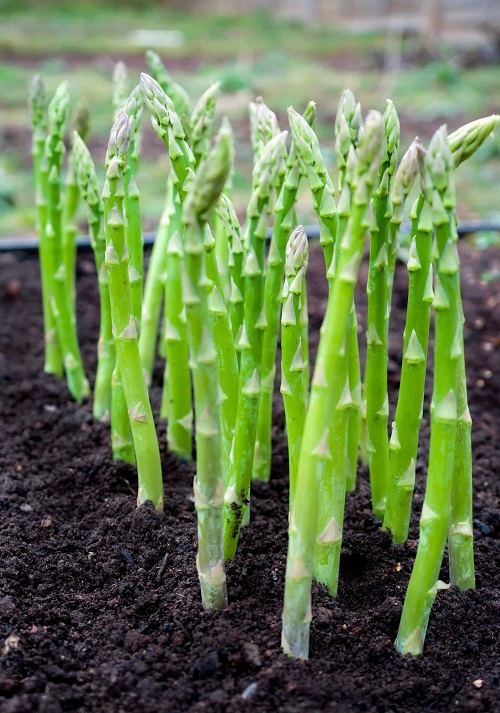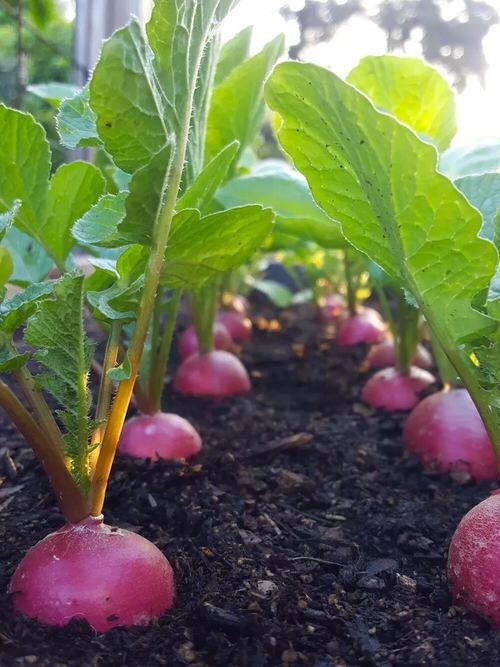If you are confused about what to plant in your garden at the start of the year, check out the Best Vegetables to Plant in February!
For most gardeners, January is the time to search the seed catalogs and make a definite plan for the majestic garden to come to life in the new year in spring. Don’t worry if you’re a couple of weeks late; here are the Best Vegetables to Plant in February.
Best Vegetables to Plant in February
1. Snow Peas
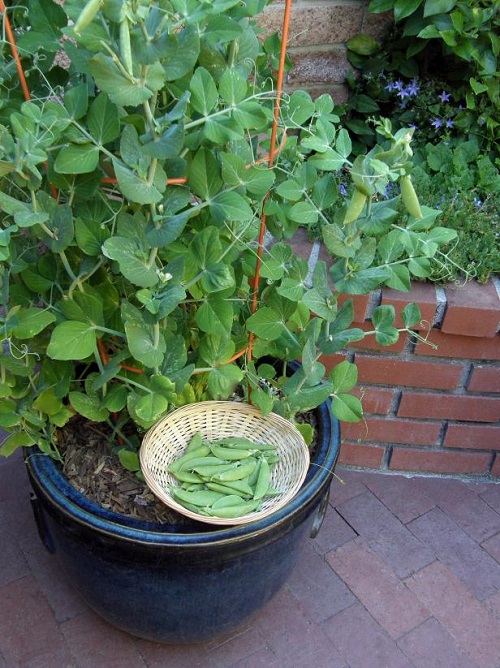
Botanical Name: Pisum sativum var. saccharatum
USDA Zones: You can plant peas in February in zones 7, 8, 9, and 11.
Snow peas are one the earliest edible pod veggies that emerge in spring, often in cold weather. This vegetable is frequently used in Chinese dishes and is high in protein and carbs, making it a healthy snack!
You can start the seeds indoors when the weather in your area warms up and transplant the plant to the garden later.
Best Varieties: Oregon Sugar Pod II, Daybreak, Sparkle, Green Arrow, Little Marvel, Wando, and Spring
Growing Requirement: Snow peas need a consistent water schedule and prefer fertile, loose soil with plenty of potassium and phosphorus.
2. Chives
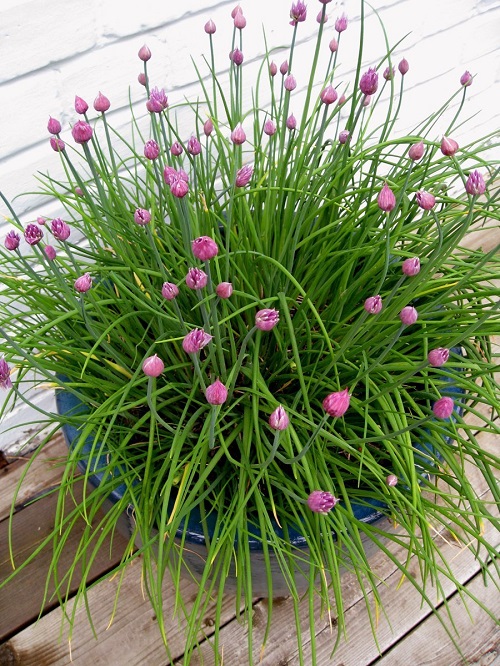
Botanical Name: Allium schoenoprasum
USDA Zones: You can plant chives in February in zones 5 to 11.
Chives are perfect for those who want a milder flavor of onions and a strong aroma. Their scapes, leaves, and flowering are primarily used as garnishing in various dishes.
This cool-season, cold-resistant perennial can be planted early to mid-spring (you can start growing chives by the middle of February) for an early summer harvest.
Best Varieties: Garlic Chive, Chinese Chives, and Giant Siberian Chives
Growing Requirement: Sow the seeds of Chives directly in the garden. Alternatively, you can also try to grow the seeds indoors on a windowsill.
3. Asparagus
Botanical Name: Asparagus officinalis
USDA Zones: You can start asparagus seeds indoors from January until February in zones 3 to 7.
Asparagus needs no introduction–boiled, stir-fried, or grilled, this veggie tastes terrific and is a good source of essential vitamins and minerals. Plant it once, and it will continue to produce for many years. You can start the seeds indoors and transplant them outside when the weather warms up.
Best Varieties: Conover’s Colossal, Grande Hybrid, Millenium, Purple Passion, Erasmus, Jersey Giant, Jersey Supreme, Jersey Knight, Mary Washington, and Spartacus
Growing Requirement: Ideally, Asparagus requires 8-10 hours of full, bright sunlight. Space them 4-5 feet apart because, after 2-4 years, they begin to spread out more.
4. Carrots
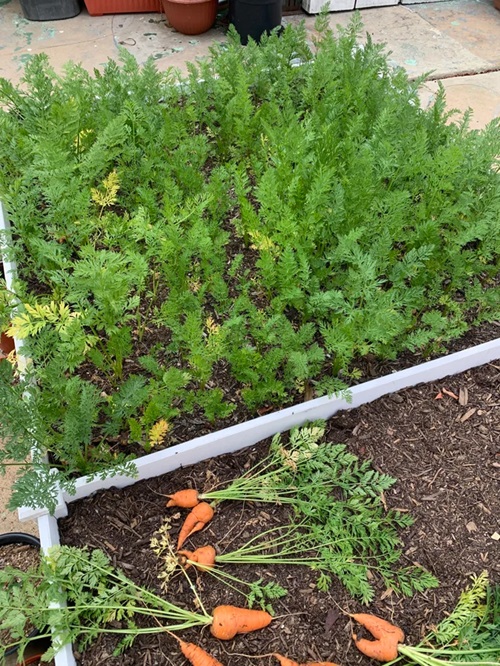
Botanical Name: Daucus carota
USDA Zones: You can plant carrots in February in zones 8 to 11. Wait till March for planting in USDA Zones below 8.
Carrots are one of the most commonly eaten and recognized root vegetables due to their bright orange color and conical shape. They have quite a history; find out here.
You can plant them in February under cloches or cover them with fleece; they’ll grow easily.
Best Varieties: Carnival Blend, Tonda di Parigi, Scarlet Nantes, Short ‘n Sweet, Thumbelina, Purple Dragon, Solar Yellow, Tendersweet, Parisian Heirloom, and Touchon
Growing Requirement: Sprinkle the tiny carrot seeds on top of the soil and then thin out the seedlings after they sprout. You can also use a seed dispenser to check for enough spacing.
5. Broccoli
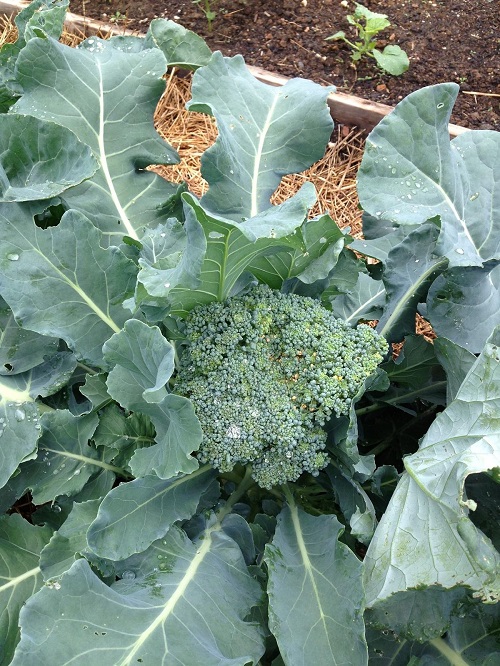
Botanical Name: Brassica oleracea var. italica
USDA Zones: You can plant broccoli in February in zones 5 to 9. You can also plant it in USDA zones 10 and 11, but it’ll be a little late.
Need a source of plant-based protein and fiber? Broccoli has got you covered! The best part is that this cool-season vegetable can be planted indoors in February. It will be ready to harvest in 60-80 days after transplantation in the container or garden.
Best Varieties: Broccoli Di Cicco, Calabrese, Destiny, Belstar, Green Magic, Purple Sprouting. You can try these ones, too.
Growing Requirement: You need to plant the seedlings directly in the soil in February, about 16-18 inches apart.
6. Kale
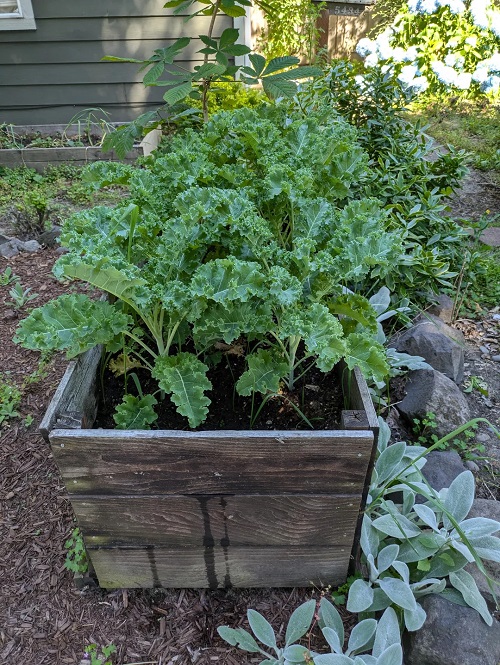
Botanical Name: Brassica oleracea var. sabellica
USDA Zones: You can start kale seeds indoors in January and February in zones 5 to 8 and outdoors in 9 to 10.
Kale is a leafy vegetable that can be either green or purple, depending on the variety. And did you know that raw kale is much more nutritionally dense than its cooked counterpart?
Kale seeds can be planted in February, March, or April in Mediterranean-like climates for spring crops.
Best Varieties: Red Russian Kale, Red Russian, Red Winter, Red Ursa, Vates Blue Scots Curled, Tronchuda Beira Hybrid, Scarlet, Redbor
Growing Requirement: Make sure you use well-draining soil and provide plenty of dappled light. If you grow Kale in February, you can harvest the first crop of baby Kale in a month.
7. Cabbage
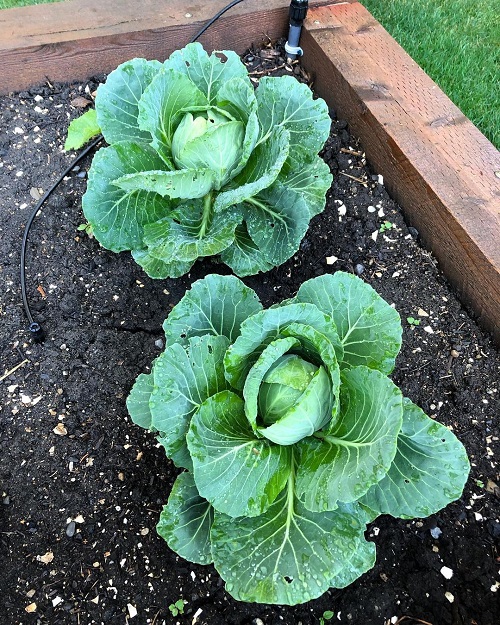
Botanical Name: Brassica oleracea var. capitata
USDA Zones: You can plant cabbage in February in zones 5 to 9.
Cabbages can be red, white, or green. Regardless of the color, most of these have crinkled leaves, a thin taproot system, and versatility in cuisine.
When planting, go for a variety that suits the season and climate of the region you are living in. If you live in a frost-free place, plant them anytime when the temperature is 50-85 F (10-30 C).
Best Varieties: Copenhagen Market, Golden Acre, Mammoth Red Rock, January King, Charleston Wakefield, Brunswick, Late Flat Dutch, Red Acre
Growing Requirement: You need to plant the seedlings out in the garden about 2-3 feet apart so that they have enough space to grow.
8. Beets
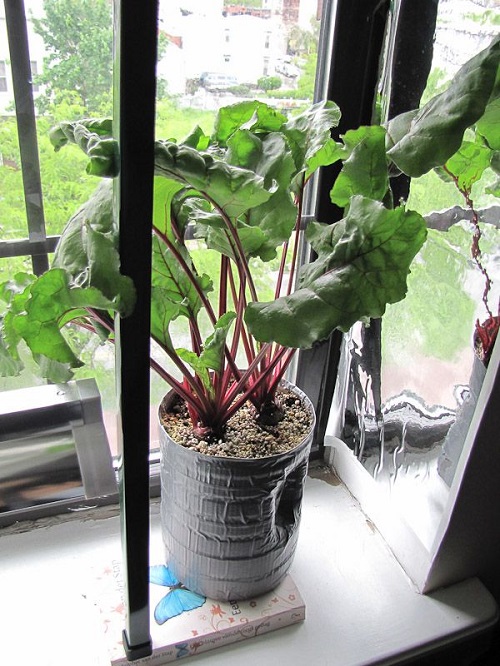
Botanical Name: Beta vulgaris subsp. vulgaris Conditiva Group
USDA Zones: You can plant beet seeds indoors in February in zones 5 to 8 and plant them outdoors in zones 9 and 10.
Beets can be directly planted in any garden in February, just soak the seeds 24 hours prior to planting to boost germination. Remember, a bit of compost or well-rotted manure will go a long way. Loosen the top 5-6 inches of the soil and add about 2 inches of compost.
Best Varieties: Detroit Dark Red, Chioggia, Golden, Crosby Egyptian, Detroit Dark Red, Cylindra, Bull’s Blood, Avalanche, Early Wonder
Growing Requirement: Start seeds in the soil in February to harvest when the roots are between 1-4 inches in diameter.
9. Leeks
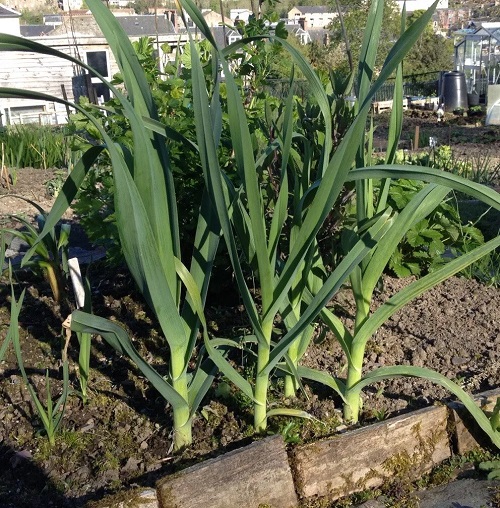
Botanical Name: Allium porrum
USDA Zones: You can plant leeks in February in zones 3a to 7b.
Just like chives, it gives a milder onion-like flavor. The white bases of the leaves are chopped in rings and usually stir-fried to provide a crunchy texture to the dish. Here’s a tip–ensure it gets plenty of dappled light; an hour or two of the morning sun is fine.
Best Varieties: King Richard Leeks, Jolant Leek, Mammoth Blanch Leek, Pot Leek, Tadorna Leek, Musselburgh Leek, Hannibal Leek, Oarsman F1 Leek; these aren’t the only ones.
Growing Requirement: Directly sow the seeds into the soil and place them 5-6 inches apart and 1/4-1/5 inch deep. Seedlings usually sprout in 10-14 days, and you can harvest the Leeks in 60-65 days.
10. Cauliflower
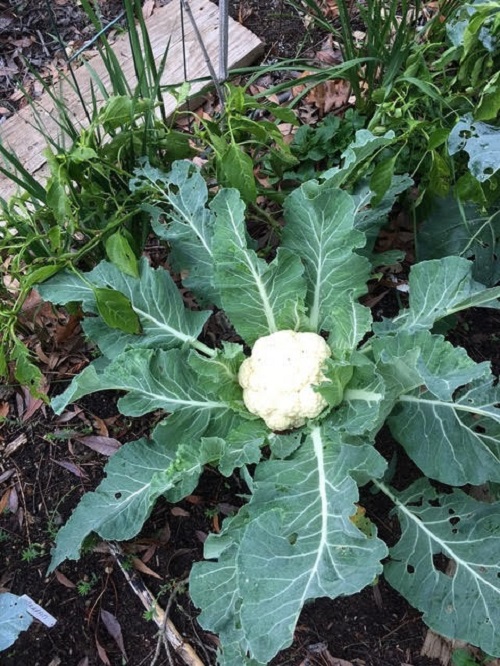
Botanical Name: Brassica oleracea var. botrytis
USDA Zones: You can plant cauliflower in February in zones 8 to 9.
You can satisfy your taste buds by eating cauliflower raw, boiled, steamed, grilled, and fried! The versatile veggie is mainly known for its edible vitamin-rich white florets, although its leaves, too, can be eaten.
Sow early summer varieties under cover in February; here’s how to take care of cauliflowers afterward.
Best Varieties: Snowball Y cauliflower is ready to harvest in 75-80 days. Graffiti Hybrid, Self-Blanching Snowball, Veronica Romanesco Hybrid, Fioretto 85, Flame Star Hybrid, Sicilian Violet, and White Corona Hybrid
Growing Requirement: In February, plant the seedlings out in the garden. Watch out for aphids to keep them away from your precious crop!
11. Radish
Botanical Name: Raphanus
USDA Zones: You can plant radishes in February in zones 8a to 9b.
The pungent, mildly spicy flavor of radishes is well-known all over the globe. It’s a root vegetable that also keeps pests at bay. Even if the weather is unfavorable, you can plant the radish seeds indoors in early spring (late February) and continue doing so every other week for a regular harvest.
Best Varieties: Easter Egg Blend, Daikon, Black Spanish, Garden Radish, Korean Radish, Raphanus caudatus
Growing Requirement: Plant the seeds directly in the soil in February. They will grow fast, and you can harvest your radishes in about 30-40 days.
12. Parsnips
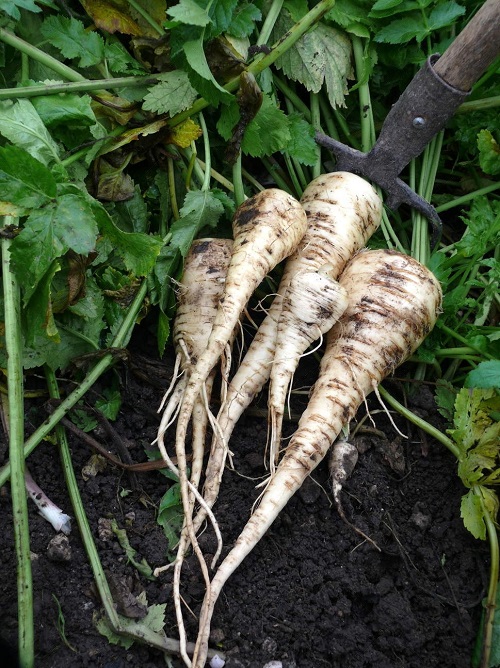
Botanical Name: Pastinaca sativa
USDA Zones: You can plant parsnips in February in zones 8 to 9
You won’t be able to tell the difference between radishes and parsnips until you take a bite. These vegetables have a cream-colored tap root system, which tastes slightly sweet.
Parsnips can be planted from February to June but have to be started under shelter or indoors if the threat of frost is expected.
Best Varieties: ‘Avonresister’ is an early maturing variety; it has great resistance to canker.
Growing Requirement: Choose a sunny location and sow seeds in light soil. You’ll need to be patient as it needs around 100 days to mature.
13. Lemongrass
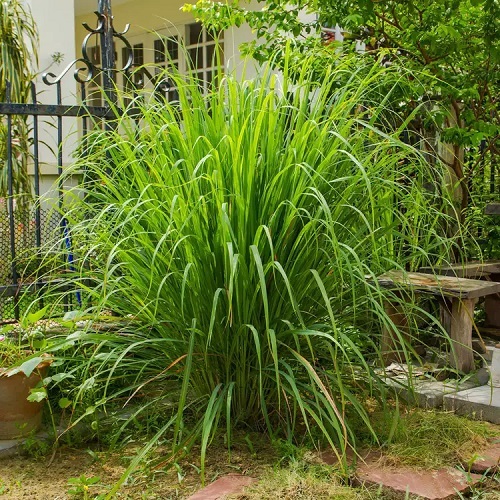
Botanical Name: Cymbopogon citratus
USDA Zones: You can plant lemongrass in February in zones 8 to 11.
Lemongrass has a strong citrus flavor and scent, which is used in making refreshing drinks and dishes and also in deterring mosquitoes.
You can plant lemongrass from mid-February through April in areas with mild winter. Start seeds indoors and transplant them in the garden when the weather warms up a bit.
Best Varieties: East Indian Lemongrass, Java Citronella Lemongrass, and Nard Grass Citronella
Growing Requirement: The best way is to start them in a seed tray; check out this post for all the details.
14. Aubergine
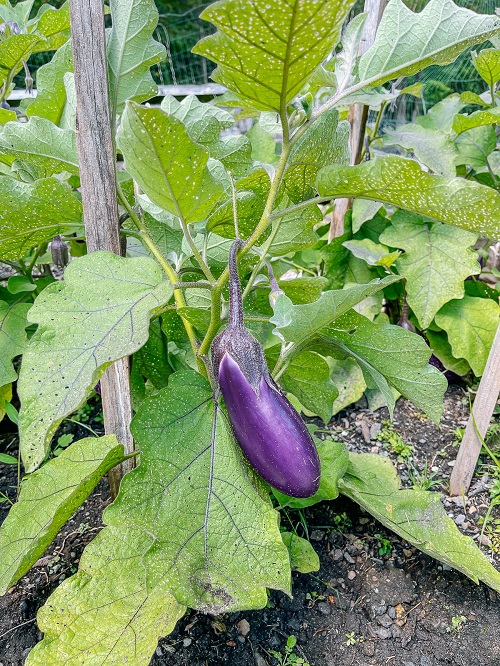
Botanical Name: Solanum melongena
USDA Zones: You can plant aubergine in February in zones 9 to 11.
Aubergine, eggplant, brinjal, this iconic “vegetable” (as it is a fruit), is known by many names. It is most known for its deep purple shade. However, several different varieties come in colors like white as well.
Sow seeds from late February to March if you are growing plants in a tunnel or greenhouse, and you will have plants ready in April-May.
Best Varieties: ‘Black Beauty,’ ‘Galine,’ Clara,’ ‘Green Knight,’ and ‘Pinstripe’
Growing Requirement: There is no complicated requirement; you can learn everything about growing aubergine here. Why don’t you try these companion plants as well?
15. Potatoes
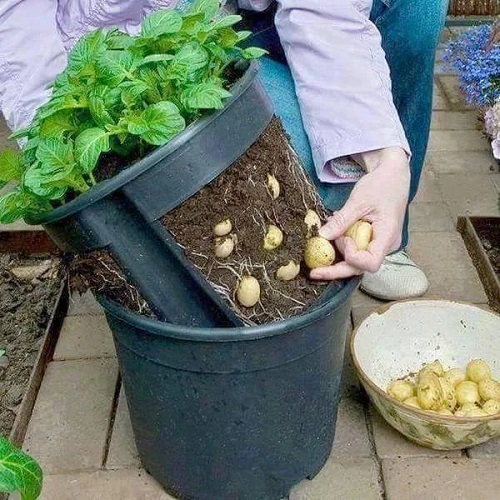
Botanical Name: Solanum tuberosum
USDA Zones: You can plant potatoes in February in zones 8 and 9.
Potatoes are one of the most famous tuberous vegetables on the planet, and rightly so, as they can fit into almost any cuisine, improving the taste, texture, and nutrient content.
Seed potatoes can be planted in February in loose, well-amended soil. You can grow them in large pots as well. Here’s how to DIY potato pots.
Best Varieties: ‘Yukon Gold,’ ‘Russian Banana,’ ‘Dark Red Norland,’ ‘Viking Purple’
Growing Requirement: Potatoes grow best in well-drained, loose, and porous soil with a pH of 5.2–6.4. Learn about Growing Potatoes in Containers here.
16. Globe Artichoke
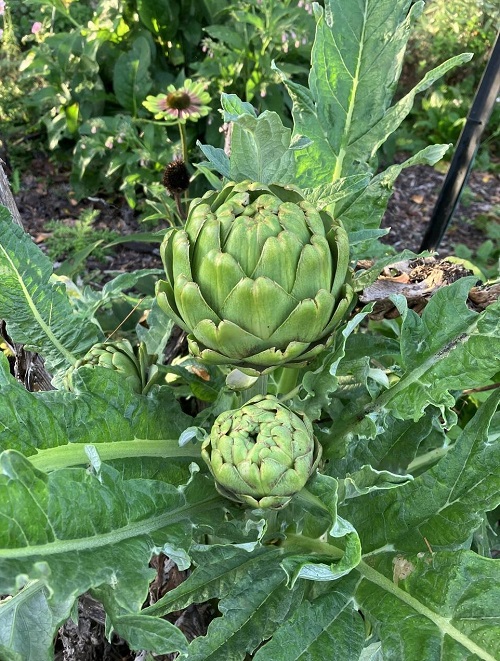
Botanical Name: Cynara cardunculus var. scolymus
USDA Zones: You can plant globe artichokes in February in zones 9 to 11.
Artichokes have an unusual form with edible buds that later grow into inedible flowers with triangular scale-like leaves. They need to be harvested before they bloom and are usually eaten as appetizers.
Sow this perennial in February to help develop a healthy root system and plush heads.
Best Varieties: The list of varieties for this vegetable to plant in February is long; you can find it here.
Growing Requirements: Use well-draining, fertile soil and select a sunny location. Start in pots under cover and sow one seed per container.
17. Rhubarb
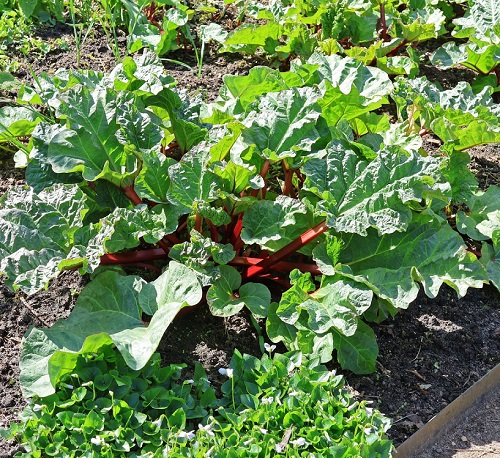
Botanical Name: Rheum rhabarbarum
USDA Zones: You can plant Rhubarb in February in zones 7 to 9.
Sharing many physical similarities to kale, this leafy plant is a perennial that grows from rhizomes. The clear distinction is that its leaves are inedible. You can enjoy the lovely red stems, though. It’s really easy to plant Rhubarb; do it using crowns indoors.
Best Varieties: ‘Giant Grooveless Crimson,’ ‘Raspberry Red’ AGM, Victoria, Stockbridge
Growing Requirement: Use well-draining soil and provide dappled light; you can also use grow lights.
18. Tomatoes
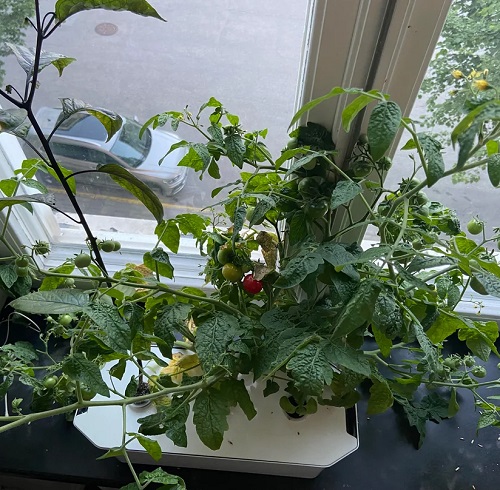
Botanical Name: Solanum lycopersicum
USDA Zones: You can plant tomato seeds indoors in February in cooler zones 7 to 9 and outdoors in 9 to 11.
Almost no dish is complete without a dash of tomato, chopped raw, cooked, or as a sauce. These vegetables are botanical berries that grow on vining plants. They have a strong umami flavor and are a powerhouse of many vitamins and minerals.
You can sow the seeds in February if the temperature in your garden is warm, and you will have one truss of flowers for the garden by mid-May.
Best Varieties: ‘Sungold,’ ‘Supersweet 100’, and ‘Black Cherry,’
Growing Requirement: Follow this simple rule–the smaller the fruit, the less sunlight and potential heat are essential to bringing it to maturity. Don’t go with the usual stuff; here’s how to grow them properly.
19. Spring Onions
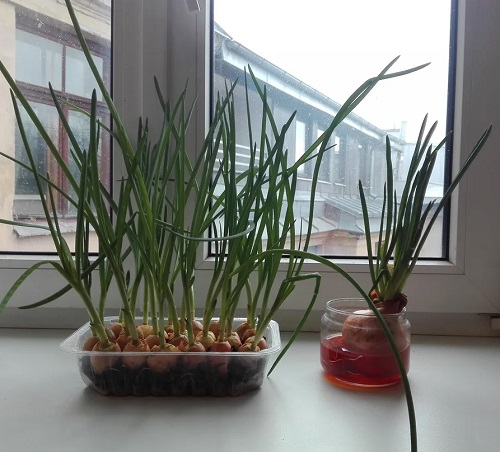
Botanical Name: Allium fistulosum
USDA Zones: You can plant spring onions in February anywhere indoors.
Spring onions, also known as scallions, are harvested before the bulbs develop and swell to the correct size. Since there is no bulb, the long stems are used in cooking to get the onion-like aroma and subtle flavor.
You can plant spring onions in February and have them next month. This versatile vegetable is a star ingredient in garnishing food.
Best Varieties: Heshiko, Welsh Onions, Evergreen Onions
Growing Requirement: Check out this post and learn How To Grow Green Onions here.
20. Mini Cucumbers
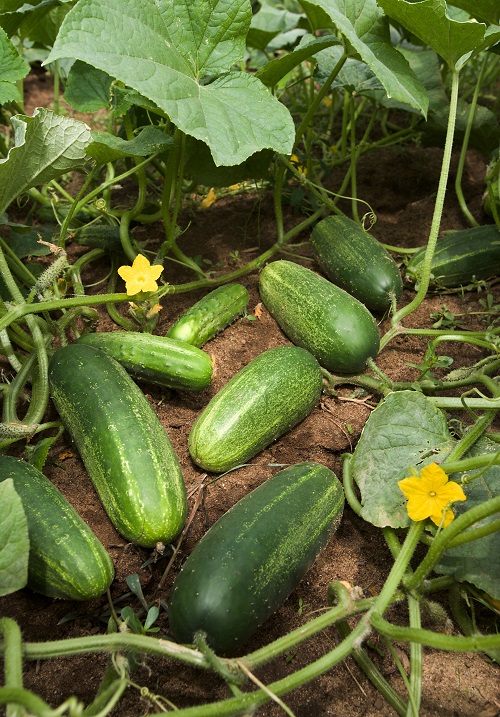
Botanical Name: Cucumis sativus
USDA Zones: You can plant mini cucumbers in February in zones 10 to 11.
Cucumbers are virtually “hydration in a plant!” These fruits are a rich source of antioxidants and vitamins. You can easily spot them growing on vining stems due to their large, green, cylindrical shape.
Mini cucumbers are fast-growing and fuss-free. Sow seeds in February if your greenhouse is heated or have an arrangement for propagation indoors. Most small varieties can be harvested in 50-60 days after planting.
Best Varieties: ‘Socrates,’ ‘Bush Champion,’ ‘Mini Munch,’ ‘Baby F1, ‘Beth Alpha,’ ‘Mini Munch’
Growing Requirement: Provide regular irrigation and keep the compost moist. There are actually tons of different ways to grow these vegetables in February.
21. Chili Peppers
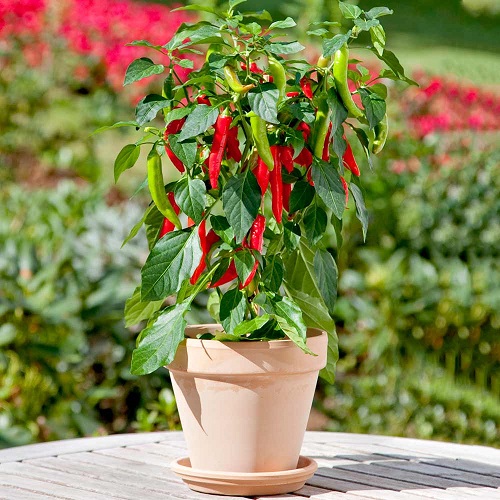
Botanical Name: Eutrema japonicum
USDA Zones: You can plant chili peppers in February in zones 6 to 8.
Need spice in your food? Say less, as chili peppers will do the job! Known for their high concentration of capsaicin, which gives them a tangy taste, chili peppers come in various colors, including the well-known red, orange, yellow, and green.
You can start growing chili peppers indoors in January and February; early sowing provides your chilies sufficient time to ripen before the end of summer.
Best Varieties: ‘Biquinho Yellow,’ ‘Trinidad Perfume,’ ‘Peruvian Lemon Drop,’ ‘Hot Thai,’ ‘Prairie Fire,’ ‘Carolina Reaper’
Growing Requirement: Start seeds indoors in a warm environment with consistent temperatures around 70 F (21 C).
22. Wasabi
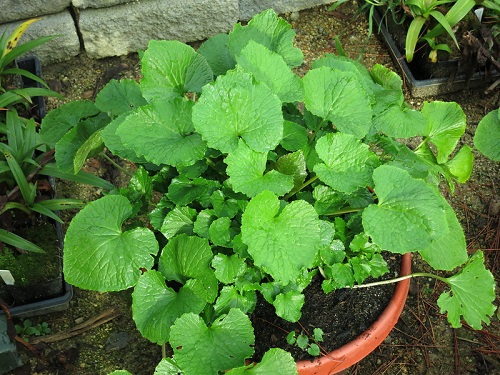
Botanical Name: Eutrema japonicum
USDA Zones: You can plant Wasabi in February in zones 8 to 10.
Seafood is incomplete without a wasabi dip. This leafy veggie grows from rhizomes and tastes similar to chili peppers when ground into a paste. It is an expensive delicacy, so growing some in your garden will save you a lot of money!
Japanese horseradish or Wasabi is a good candidate to plant in February.
Best Varieties: Wasabia japonica, Eutrema japonica, Wasabi koreana, Wasabi tetsuigi, Cochlearia wasabi
Growing Requirement: The best time for planting is late fall up to early or mid-winter, as wasabi seeds need cold winter temperatures to break dormancy, around two months before they sprout in February. Learn How to Grow Wasabi here.


